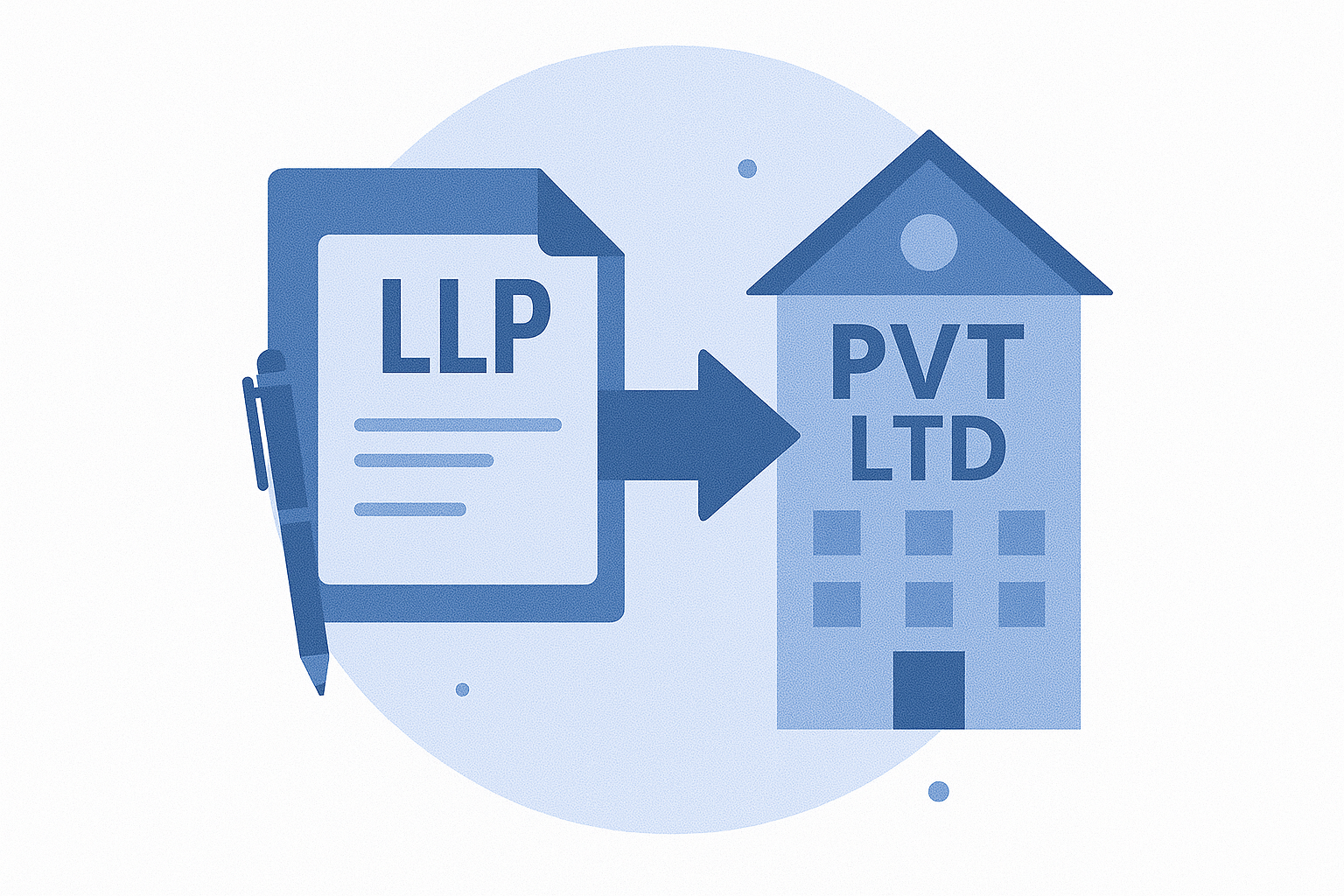
CONVERSION OF LLP TO PRIVATE LIMITED
Many businesses start as LLPs and later convert to a Private Limited company to access equity funding, enhanced governance, and broader growth opportunities. We guide you through regulatory, tax and ROC formalities for a smooth conversion.
CONVERSION OF LLP TO PRIVATE LIMITED COMPANY
Overview
The journey from a Limited Liability Partnership (LLP) to a Private Limited Company is common for businesses seeking equity investment, clearer ownership structure and enhanced credibility. Conversion requires meeting statutory conditions, shareholder/member approvals and ROC filings as per Companies Act and MCA guidance.
Choice of Private Limited Company
A private limited company offers a familiar corporate framework — limited liability for shareholders, easier access to investor capital, and the possibility to issue shares and ESOPs. For many growing LLPs, conversion provides a platform to scale operations and bring in external funding.
Benefits of Conversion
- Enhanced ability to raise equity and external investment.
- Clear share-based ownership that supports employee incentive plans.
- Continuity of business with transferability of shares subject to AOA/agreements.
- Improved corporate governance and perception with investors, banks and partners.
BENEFITS
Why convert your LLP to a Private Limited company
Access to Equity
Easier to raise investor funding by issuing shares.
Employee Incentives
Can offer ESOPs and stock-based compensation to retain talent.
Corporate Credibility
Better perception with banks, suppliers & institutional investors.
Ownership Transfer
Shares are transferable as per Articles, enabling liquidity options.
Limited Liability
Shareholder liability limited to paid-up capital.
Financial Reporting
Structured financial reporting and audit readiness for growth.
Conversion Process
High-level steps involved in converting an LLP to a Private Limited Company
Board / Partner Approval
Obtain partner approval and decide conversion route (amalgamation, scheme or direct conversion where permitted).
Valuation & Capital Structure
Agree capital structure, share allotment, valuation and draft Articles of Association.
Documentation & Resolutions
Prepare resolutions, member consents, transfer instruments and other statutory documents.
ROC Filings & Incorporation
File requisite e-forms with ROC for incorporation and compliance; obtain Certificate of Incorporation as a Private Limited Company.
DOCUMENTS REQUIRED
Scanned copies & information typically required for conversion
Identity Proof
PAN / Aadhaar / Passport of partners and directors.
Photograph
Passport size photographs of partners/directors.
LLP Agreement
Current LLP agreement and incorporation documents.
Board / Partner Resolution
Resolution approving conversion and proposed capital structure.
Registered Office Proof
Utility bill / rent agreement and NOC from owner if applicable.
Specimen Signatures
Specimen signatures of authorised signatories.
Financials
Latest financial statements and bank statements.
Additional Info
Proposed MOA / AOA, list of proposed directors and shareholding details.
Important Notes
Tax & Statutory Considerations: Conversion may have tax implications — capital gains, transfer of assets, GST registration changes and other compliance; professional advice is recommended.
Employee & Contractual Rights: Review employment agreements, client contracts and any regulatory approvals that may be impacted by the change in legal form.
Continuity: Where permissible, business operations can continue while statutory filings are completed; certain registrations (GST, TAN, PAN) may need to be migrated or re-applied for.
Frequently Asked Questions
Please reach us at contact@harshdeepnarula.in if you cannot find an answer to your question.
To raise equity, offer ESOPs, improve credibility, and provide a standard corporate ownership structure preferred by investors.
Conversion depends on statutory conditions being met and the conversion route available under applicable laws; certain cases may require scheme approval.
Typically liabilities and contracts are carried forward but documentation should explicitly provide for transfer/assignment and professional advice is required.
There can be tax events (capital gains, stamp duty) on transfer of assets; consult tax advisors to structure the conversion tax-efficiently.
Timelines vary — usually a few weeks to a few months depending on documentation, ROC timelines and regulatory checks.
Ready to convert your LLP?
We assist with valuation, documentation, ROC filings and complete end-to-end liaison to ensure a compliant conversion.
Contact Our Experts